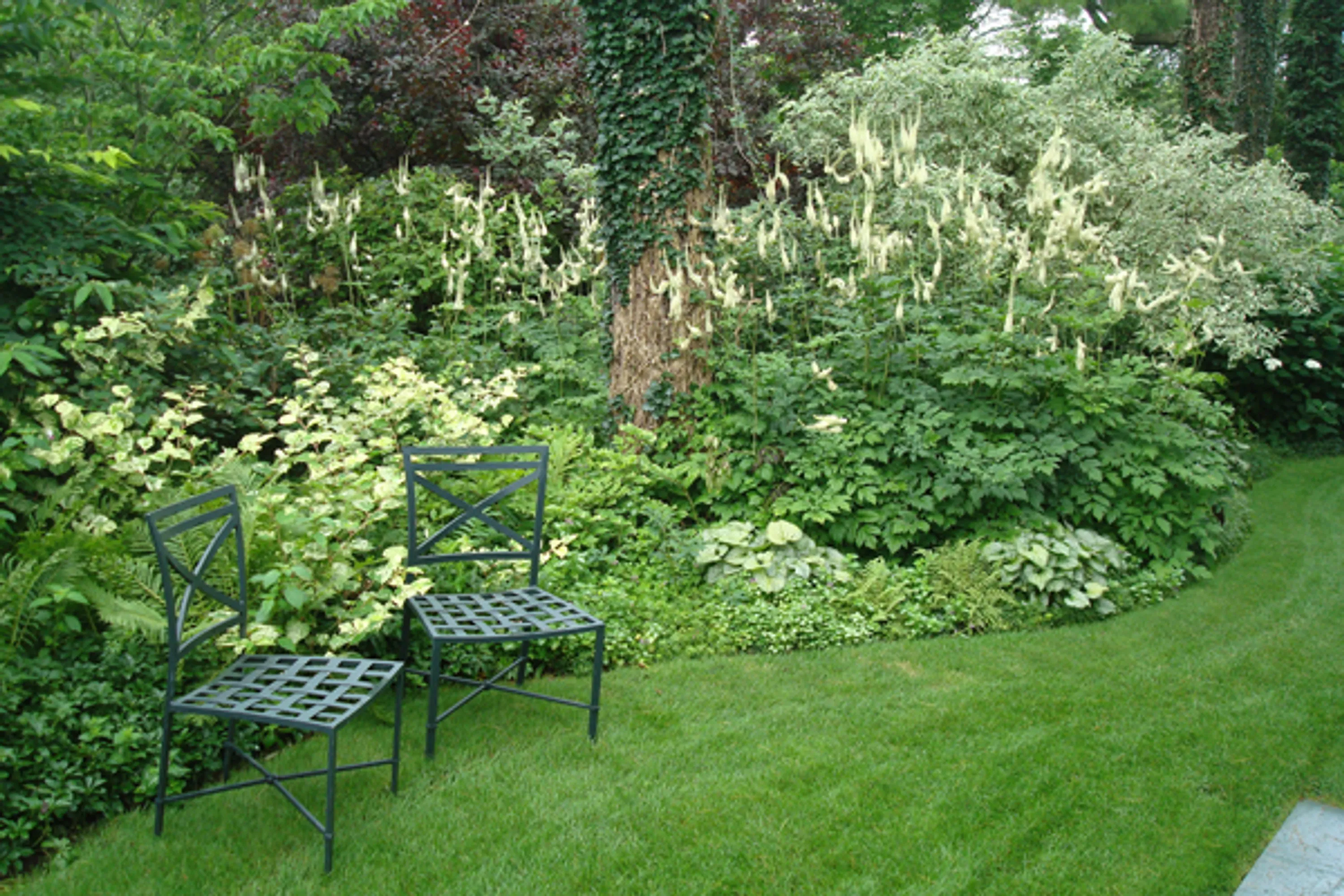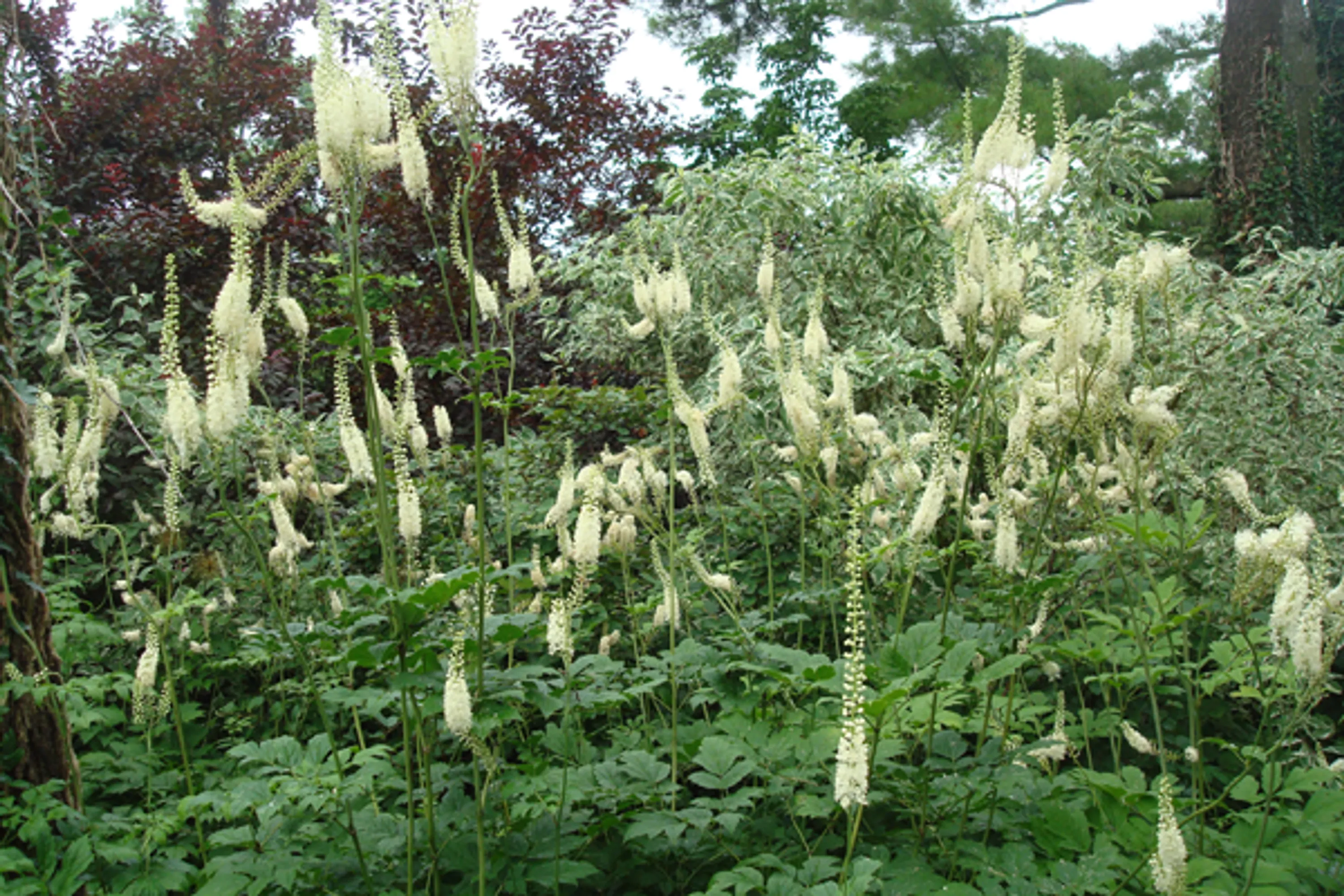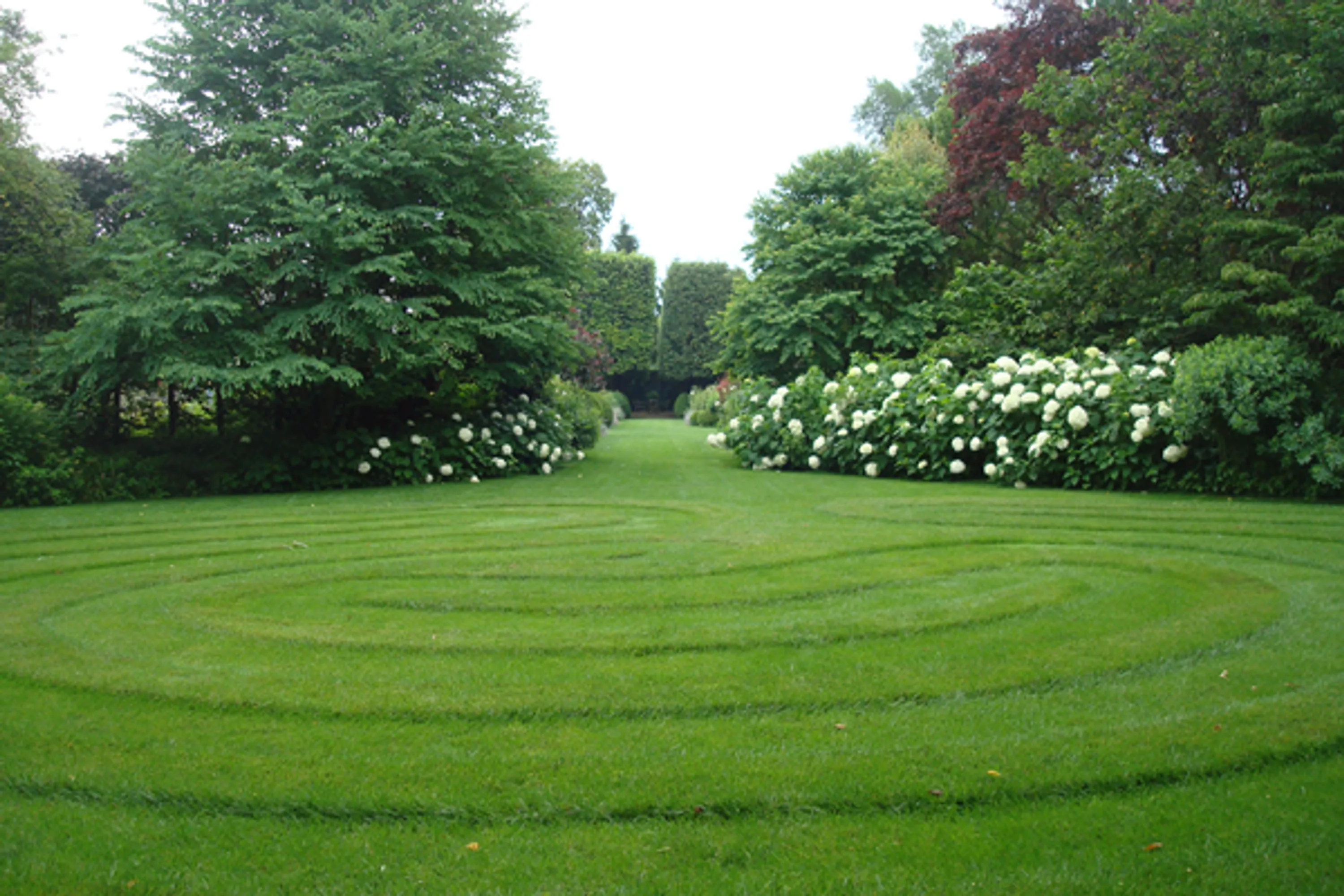Camp Rosemary is a garden designed in the 1920s by Rose Standish Nichols. On a tour of the garden this summer, I took time to reflect on the formal and evocative qualities of several types of plants. Two opposing elements; the vertical and the planar, are used in this garden to generate several playful vignettes and engage the design components of the garden.
In this collection of Actaea matsumurae ‘White Pearl’, whimsical blooms float above fine leafy foliage. ‘White Pearl’ throws a veil of vertical punctuations in front of the distant border, providing a visual anchor through which to perceive the mass of planting beyond.





